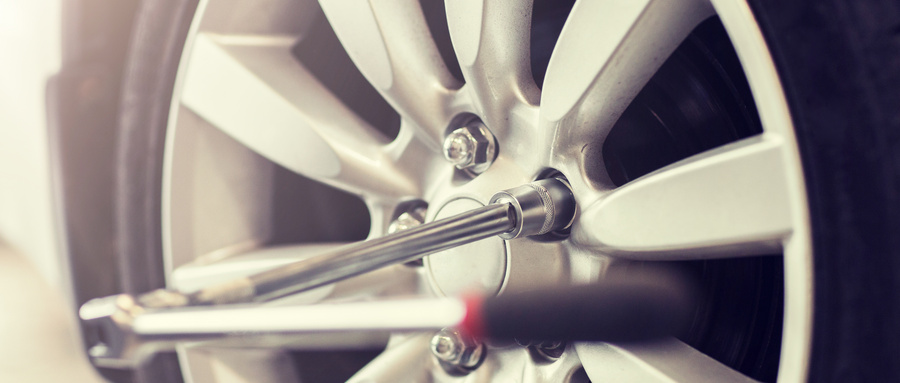
(1) Safe storage
All tires should be stored indoors in a cool, dry, and dark environment, avoiding exposure to sunlight, oil, acids, and hydrocarbons, which can corrode the tires. Due to pressurization, liquid may enter the tire body layer through the inner airtight layer of the tire, which can cause sudden damage to the tire.
(2) Tire maintenance
Timely rotation of tires, selection of appropriate patterns, daily maintenance, regular inspection of tire pressure, timely repair of damaged tires, and frequent excavation and cleaning of stones, foreign objects, etc. in tire patterns are all important factors in extending tire life. After a period of use, tires are affected by factors such as road camber, brake braking, and different tire assembly positions, which can cause significant differences in tire wear. Therefore, it is necessary to achieve timely rotation and assembly to ensure that each tire can rotate once at each position, and the load borne by each tire is approximately the same, in order to solve the problem of tire bias wear and prolong its service life. There are two commonly used methods for tire rotation: "cross rotation" and "cyclic rotation". When mixing new and old tires, if the new tires are good, the new tires or better tires should be fixed to the front wheels, and if the old or refurbished tires are fixed to the rear wheels, methods such as shifting left and right, shifting inside and outside, etc. should be adopted. When changing the original rolling direction after shifting, the tire should be reversed (i.e. changing the installation position and rolling direction). This is a measure to reduce or even eliminate tire bias, chamfering, and excessive shoulder fatigue. It is also a way to extend tire service life and improve the retreading rate. [6]
(3) Ensure standard air pressure
Master the inflation standards of tires and ensure that the tire pressure is at the specified value. High or low tire pressure will increase wear and reduce driving distance. When the tire pressure is below the standard value, the wear of the tire shoulder increases sharply; When the tire pressure is higher than the standard value, due to the reduction of the tire ground area and the increase in unit pressure, the wear in the middle of the tire tread increases, while also increasing the tire rigidity, which increases the dynamic load on the wheels and is prone to tire burst. The impact is more severe when driving on uneven roads or at high speeds. [6]
(4) Control tire temperature
When a car is driving, the temperature inside the tire increases due to deformation and friction. When it reaches above 100 ℃, the strength of the tire body is greatly reduced, which is prone to damage such as delamination and explosion. Tire temperature is difficult to measure and is usually determined based on the degree of tire pressure increase. A higher tire pressure indicates a higher tire temperature. When the ambient temperature is above 30 ℃, the degree of tire pressure increase should not exceed 20% of the inflation standard. Due to poor heat dissipation conditions, the tire temperature can easily exceed 100 ℃. When driving at high temperatures in summer, if the tire temperature is too high, the vehicle should be parked in a cool place to naturally cool down. It is strictly prohibited to use methods such as splashing cold water or deflating to cool down and reduce pressure. Because splashing cold water will cause the tire to suddenly cool down, causing uneven shrinkage in various parts, making it prone to cracking and affecting its service life. When the weather is hot, if there is a section of the road that needs to be waded in, you should also stop to cool down first to avoid adverse effects on the tires. If the tire is deflated during the journey, although the tire pressure decreases, the tire temperature does not decrease, but it disrupts the original balance condition. When driving further, the deformation increases due to the decrease in pressure, which will continue to increase the tire temperature on the original basis until the heat generation and heat dissipation of the tire are balanced again. At this time, the tire temperature increases significantly, causing serious damage to the tire.
(5) The impact of driving habits on tires
① Start smoothly. Due to the sudden rotation of the wheels from a stationary state, severe friction between the tires and the road surface can accelerate the wear of the tire crown Drive at medium speed. According to information, when the vehicle speed changes from medium to high, the tire mileage will be reduced by 15%. In addition, the higher the vehicle speed, the greater the frequency of wave vibration. When the vehicle speed reaches a certain critical speed, the wave deformation on the surface of the tire crown will significantly increase, forming a stationary waveform. This is the standing wave phenomenon of tires. When a standing wave phenomenon occurs, the tire becomes out of round, the tire temperature rises sharply, and the tire fabric layer and tread will peel off and scatter. If it is small, it can cause tire damage, and if it is large, it may cause major traffic accidents Try to avoid emergency braking. During emergency braking, the wheels change from rolling to dragging, causing friction between the tires and the road surface, resulting in severe wear and tear due to overheating. If emergency braking is frequently used at high speeds, a large amount of heat will be generated, causing tire aging and causing malignant damage to the tire.
(6) Routine inspection before driving
Before driving, check the tires for bulges, cracks, cuts, punctures, lack of air, and abnormal wear. If any are found, they must be repaired immediately. Check if there are any foreign objects such as debris, metal sheets, glass, or stones stuck in the tire groove on the tire tread. If any, use a screwdriver to remove them. Check the fastening of the tire fixing nuts and tighten them promptly if any looseness is found. If the tire pressure is found to be 20% lower than the standard, the tire must be removed from the nearest tire shop as soon as possible and inspected by technical personnel. Pay attention to whether there is deformation, cracking, or other damage to the wheel rims of the vehicle body, in order to facilitate driving safety.








